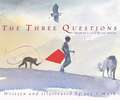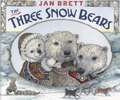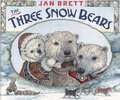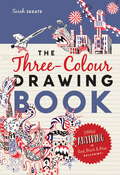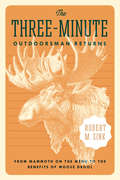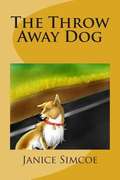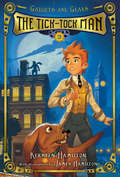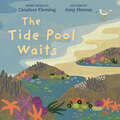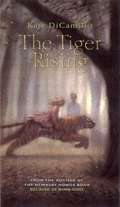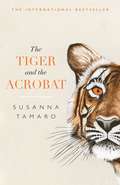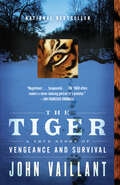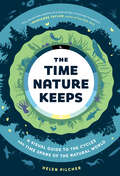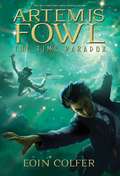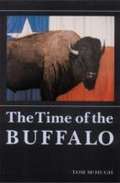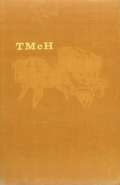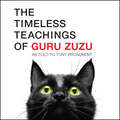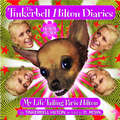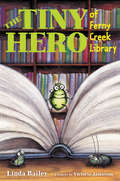- Table View
- List View
The Three Pigs
by David WiesnerWinner of the 2002 Caldecott Medal This picture book begins placidly (and familiarly) enough, with three pigs collecting materials and going off to build houses of straw, sticks, and bricks. But the wolf&’s huffing and puffing blows the first pig right out of the story . . . and into the realm of pure imagination. The transition signals the start of a freewheeling adventure with characteristic David Wiesner effects—cinematic flow, astonishing shifts of perspective, and sly humor, as well as episodes of flight. Satisfying both as a story and as an exploration of the nature of story, The Three Pigs takes visual narrative to a new level. Dialogue balloons, text excerpts, and a wide variety of illustration styles guide the reader through a dazzling fantasy universe to the surprising and happy ending. Fans of Tuesday&’s frogs and Sector 7&’s clouds will be captivated by old friends—the Three Pigs of nursery fame and their companions—in a new guise.
The Three Questions
by Jon J. MuthWhen Jon Muth read Tolstoy's story by the same title, he wanted to find a way to introduce children to "The Three Questions." In thi beautiful book for young readers, Muth brings together children, animals, a forest, and a wild storm to help Nicolai answer his questions. This file should make an excellent embossed braille copy.
The Three Snow Bears
by Jan BrettAloo-ki glances up from fishing and sees her sled dogs floating off on an ice floe. She races after them and comes upon an igloo. Being a curious girl, she goes inside only to find no one home. That's because the polar bear family who lives there is out walking while their breakfast cools off. Aloo-ki eats some soup, tries on their boots, and finally crawls into the smallest bed for a nap. Meanwhile, Papa, Mama, and Baby Bear see her dogs adrift, swim out to rescue them and return home to find Aloo-ki fast asleep in Baby Bear's bed.
The Three Snow Bears
by Jan BrettJan Brett's #1 New York Times bestseller is the snowiest twist on Goldilocks and the Three Bears you could ask for!When Aloo-ki glances up from fishing and sees her sled dogs floating off on an ice floe, she races after them. She comes upon an igloo with no one home and goes inside. Turns out the polar bear family who lives there is out walking while their breakfast cools off. Aloo-ki eats some soup, tries on their boots, and finally crawls into the smallest bed for a nap. Meanwhile, Papa, Mama, and Baby Bear see her dogs adrift, swim out to rescue them and return home to find Aloo-ki fast asleep in Baby Bear's bed.Jan traveled to the far North to meet the Inuit people and see the amazing land where they live. Dramatic illustrations capture the shimmering ice, snow and deep blue seas of the Arctic, and when Jan adds a raven-haired Inuit girl and her appealing huskies, an endearing family of polar bears, and playful Arctic animals in the borders, the result is one of her most beautiful picture books.The decorative Inuit patterns and clothing Jan uses throughout are sure to attract adult fans and collectors while children will want to listen to and look at this exciting version of a well-loved story over and over again.Snuggle up with all of Jan Brett's snowy treasures: The Mitten, The Hat, The Snowy Nap, Cozy, and The Trouble With Trolls.
The Three-Colour Drawing Book: Draw anything with red, blue and black ballpoint pens
by Sarah SkeateYou won't believe how much fun you can have with just three coloured ballpoint pens! This engaging and anarchic little book takes the art of doodling and drawing to new heights, using the most basic tools and only three colors: red, black & blue.The artistic explorer will discover how to make punky patterns, draw the most adorable animals, personalise their belongings, and summon up the cutest little characters-all with the pens that they already have at home. Combining step-by-step lessons in drawing with ingenious ways of decorating and doodling, The Three-Colour Drawing Book is a perfect for ballpoint mavericks of all ages.
The Three-Minute Outdoorsman Returns: From Mammoth on the Menu to the Benefits of Moose Drool
by Robert M. ZinkSpending time in nature can raise some serious questions. After contemplating your own mortality, you may start to wonder: Why don’t deer noses freeze in the winter? What does mammoth taste like? Do fish feel pain? These are important questions, and Robert M. Zink has the answers. Bringing together the common and the enigmatic, The Three-Minute Outdoorsman Returns includes over seventy three-minute essays in which Zink responds to the queries that have yet to cross your mind. Drawing on his zoological background, Zink condenses the latest scientific discoveries and delivers useful, entertaining information on the great outdoors. Can a sheep’s horns be too big? Was the Labrador duck a hybrid? Why did I miss that clay target? A large section on deer covers topics ranging from deer birth control backfiring, new information on Chronic Wasting Disease, supplemental feeding, and deer genetics. Other essays explore land, aquatic animals, and humanity’s relationship with nature, thus making this book of wild science an essential for any outdoors person.
The Three-legged Cat
by Margaret MahyBut will Mrs. Gimble miss her cat? Or, will Danny miss his Russian hat? A delightful book for young readers. Other books by Margaret Mahy are available in this library.
The Throw Away Dog
by Janice SimcoeMaggie was thrown away. Abandoned and left alone in a field, she believed it was the worst day of her life. What she didn't know, it was the beginning of a grand adventure. The Throw Away Dog, is an uplifting and often humorous adventure of Maggie and her new pals, Harry and Brittany. What seems to be hopeless circumstances for this witty and funny dog, transcends into a modern day adventure on the Sacramento Delta in Northern California. The Delta is an endless network of rivers, tributaries, and small streams. It is an ideal setting for an adventure. When the three characters embark on their accidental journey, they each come face-to-face with their own fears and rise above them. Written for middle grade children, the story was inspired by an actual dog named Maggie, who was truly a throw away dog. The rest, of course, is fiction and a fun read. It is a story for animal lovers.
The Thunderstruck Stork
by Lynn Munsinger David J OlsonWebster the stork is proud of his work delivering animal babies. But when he crashes into a hot-air balloon, something goes wrong. Soon the bats get a moose and two tiny frog parents receive an enormous newborn elephant!
The Tick-Tock Man
by James Hamilton Kersten HamiltonWally and Noodles are back to the business of scientific innovation--and fun. In London, they meet a young pickpocket named Dobbin who works for a mysterious criminal called the Tick-Tock Man. Soon they are racing through secret tunnels in a bid to help Dobbin's little sister. Can the brave boy-scientist and his loyal sidekick find the one person who can save her before it's too late? History and technology collide in this humorous series brimming with mad science.
The Tide Pool (Fountas & Pinnell Classroom, Guided Reading)
by Sarah SamuelsNIMAC-sourced textbook. Living in a Tide Pool. What animals live in a tide pool? Come and see!
The Tide Pool Waits
by Candace FlemingDive into the rich ecology of tide pools and watch a hidden world spring in this masterful nonfiction picture book for very young readers. <P><P> Twice a day when the tide goes out, an astonishing world is revealed in the tide pools that form along the Pacific Coast. <P><P> Some of the creatures that live here look like stone. Others look like plants. Some move so slowly it’s hard to tell if they’re moving at all, while others are so fast you’re not sure you really saw them. The biggest animals in the pool are smaller than your hand, while the smallest can’t be seen at all without a microscope. <P><P> During low tide, all these creatures – big, small, fast, slow – are exposed to air and the sun’s drying heat. And so they have developed ways to survive the wait until the ocean’s return. <P><P> Candace Fleming is the author of Honeybee, which received an Orbis Pictus Honor and 7 starred reviews. She brings her knack for making science and nature appealing to the very young in The Tidepool Waits with detailed accounts of dozens of species of sea life, culminating in a perfect primer for students and nature lovers taking their first trip to the shore. Her text is accompanied by effervescent artwork by Amy Hevron and substantial backmatter. <P><P><i>Advisory: Bookshare has learned that this book offers only partial accessibility. We have kept it in the collection because it is useful for some of our members. Benetech is actively working on projects to improve accessibility issues such as these.</i>
The Tiger Rising
by Kate DiCamilloWalking through the misty Florida woods one morning, twelve-year-old Rob Horton is stunned to encounter a tiger--a real-life, very large tiger--pacing back and forth in a cage. What's more, on the same extraordinary day, he meets Sistine Bailey, a girl who shows her feelings as readily as Rob hides his. As they learn to trust each other, and ultimately, to be friends, Rob and Sistine prove that some things--like memories, and heartache, and tigers--can't be locked up forever.
The Tiger and the Acrobat
by Susanna TamaroINCLUDES SPECIALLY COMMISSIONED LINE DRAWINGS Little Tiger is not like other tigers. Not content to spend her days alone, roaming the snow forests of Siberia hunting prey, she prefers instead to ponder the ways of the world. One day, eager to discover her own place within it, she sets out on a remarkable journey to discover the secret of life, and to meet the creatures she has heard most about: humans. A moving tale of bravery and spirit, The Tiger and the Acrobat is a celebration of the power of friendship, and a testament to the courage it takes to be true to ourselves. 'This book is a beaut.' Cecelia Ahern, author of P.S. I Love You
The Tiger: A True Story of Vengeance and Survival (Vintage Departures Ser.)
by John VaillantNATIONAL BESTSELLER • A gripping story of man pitted against nature&’s most fearsome and efficient predator. This "travelogue about tiger poaching in Russia&’s far east opens up a new genre ... [the] conservation thriller" (Nature).Outside a remote village in Russia&’s Far East a man-eating tiger is on the prowl. The tiger isn&’t just killing people, it&’s murdering them, almost as if it has a vendetta. A team of trackers is dispatched to hunt down the tiger before it strikes again. They know the creature is cunning, injured, and starving, making it even more dangerous. As John Vaillant re-creates these extraordinary events, he gives us an unforgettable and masterful work of narrative nonfiction that combines a riveting portrait of a stark and mysterious region of the world and its people, with the natural history of nature&’s most deadly predator.
The Tiger: Its Life in the Wild
by George B. Schaller Millicent E. SelsamProvides information on tigers in their natural habitat.
The Time Nature Keeps: A Visual Guide to the Cycles and Time Spans of the Natural World
by Helen PilcherAn eye-opening, infographic journey of discovery through the various clocks the natural world lives by—from life spans and growth spans to reaction times, relative lengths of sleep and hibernation, and much more
The Time Paradox (Artemis Fowl #6)
by Eoin ColferArtemis's mother has contracted a deadly disease--and the only cure lies in the brain fluid of African lemurs. Unfortunately, Artemis himself was responsible for making the lemurs extinct five years ago. Now he must enlist the aid of his fairy friends to travel back in time and save them. Not only that, but he must face his deadliest foe yet...his younger self.
The Time of the Buffalo
by Tom Mchugh Victoria HobsonThe magnificent beast that once roamed from Alaska to the Carolinas "in numbers numberless" is splendidly memorialized in The Time of the Buffalo, which begins with its genesis in the Ice Age, traces its evolution and natural history, observes its patterns of behavior, and records its life-and-death relationship with three cultures of man. Here are the ways in which the buffalo crucially affected (and was affected by) the hunters of the Pleistocene epoch and, in our era, the life of the Plains Indians and nineteenth-century frontiersmen. Here is the creature itself--seen as an integral part of a rich ecological and cultural tapestry. Combining extensive field research on live herds with the study of historical records, Tom McHugh offers a rare closeup of the buffalo's habits and life cycle, detailing such aspects as mating, calving, stampedes, play, and aggression. In equally fascinating detail he tells how the Plains Indians used the buffalo for food, clothing, and shelter, and endowed it with spirit; how the European settlers viewed it first as an object of awe and then as a source of plunder and how, by nearly exterminating this single species, they destroyed all the Plains cultures. An account of the movement to save the buffalo completes this informative and moving work--the 1972 winner of the Western Writers of America Spur Award in the nonfiction category as well as being voted the year's best western historical book by the National Cowboy Hall of Fame.
The Time of the Buffalo
by Tom MchughThe magnificent beast that once roamed from Alaska to the Carolinas "in numbers numberless" is splendidly memorialized in The Time of the Buffalo, which begins with its genesis in the Ice Age, traces its evolution and natural history, observes its patterns of behavior, and records its life-and-death relationship with three cultures of man. Here are the ways in which the buffalo crucially affected (and was affected by) the hunters of the Pleistocene epoch and, in our era, the life of the Plains Indians and nineteenth-century frontiersmen. Here is the creature itself—seen as an integral part of a rich ecological and cultural tapestry. Combining extensive field research on live herds with the study of historical records, Tom McHugh offers a rare closeup of the buffalo's habits and life cycle, detailing such aspects as mating, calving, stampedes, play, and aggression. In equally fascinating detail he tells how the Plains Indians used the buffalo for food, clothing, and shelter, and endowed it with spirit; how the European settlers viewed it first as an object of awe and then as a source of plunder and how, by nearly exterminating this single species, they destroyed all the Plains cultures. An account of the movement to save the buffalo completes this informative and moving work—the 1972 winner of the Western Writers of America Spur Award in the nonfiction category as well as being voted the year's best western historical book by the National Cowboy Hall of Fame.
The Timeless Teachings of Guru Zuzu
by Tony BroadbentIf you live with a cat, you live with a teacher, one that watches your every move. When author Tony Broadbent began observing his cat Zuzu in all her daily wanderings, he found she led him to new pathways of thought, new insights, and an unexpected trove of wisdom. In tribute to the beloved little Bombay pussycat he took as his teacher, Tony has collected some of the teachings of Guru Zuzu into this enchanting little book. He has coupled them with illustrations that celebrate all cats, in the simple hope that you may delight in them too. And perhaps, as he did, also find some small measure of enlightenment for the way ahead.
The Tiniest Show on Earth: The Truth Behind Flea Circuses (Fountas & Pinnell Classroom, Guided Reading)
by Kim PhanNIMAC-sourced textbook. CRUEL REALITY. Many people love going to the circus … but what about the flea circus? For 150 years, tiny circuses that featured fleas performing tricks were a huge sensation. But behind the happy music and exciting tricks existed a cruel reality.
The Tinkerbell Hilton Diaries: My Life Tailing Paris Hilton
by Tinkerbell Hilton D. ResinParis Hilton's dog, Tinkerbell, gives the inside scoop about her owner--and gets downright catty--in this outrageous and hilarious parody.
The Tiny Circus (Fountas & Pinnell Classroom, Guided Reading Grade 1)
by Cathleen Penny Susan BatoriNIMAC-sourced textbook
The Tiny Hero of Ferny Creek Library
by Linda Bailey Victoria JamiesonEddie, a passionate reader and a shiny green bug, saves the school library in this funny, heartwarming tale that fans of Flora & Ulysses and Charlotte’s Web will love. Includes black-and-white illustrations throughout from Newbery Honor Medalist and New York Times-bestselling author-artist Victoria Jamieson.Eddie is a tiny green bug who loves to read and who lives behind the chalkboard in the fourth-grade classroom with his parents, his 53 brothers and sisters, and his aunt Min. But when Aunt Min goes to the school library to read a book and never returns, Eddie leaves the comfort of his home for the first time and makes the dangerous trek through Ferny Creek Elementary School to find her. After dodging running sneakers, falling books, and terrifying spiders, Eddie reaches the library, where he discovers Aunt Min stuck in a perilous situation! To top it all off, there’s a substitute librarian who aims to close the library for good and get rid of all the books!Encouraged by the brave deeds done by small creatures such as Stuart Little and Charlotte from Charlotte’s Web, Eddie comes up with a plan to save the library—a plan that requires all the courage one little bug can muster.A great read-aloud and read-alone, this action-packed short novel includes references to classic children’s literature throughout and is perfect for fans of Chris Grabenstein’s Escape from Mr. Lemoncello’s Library and Lynne Rae Perkins’s Nuts to You. Featuring extensive black-and-white art from Newbery Honor Medalist and New York Times-bestselling author-artist Victoria Jamieson.

